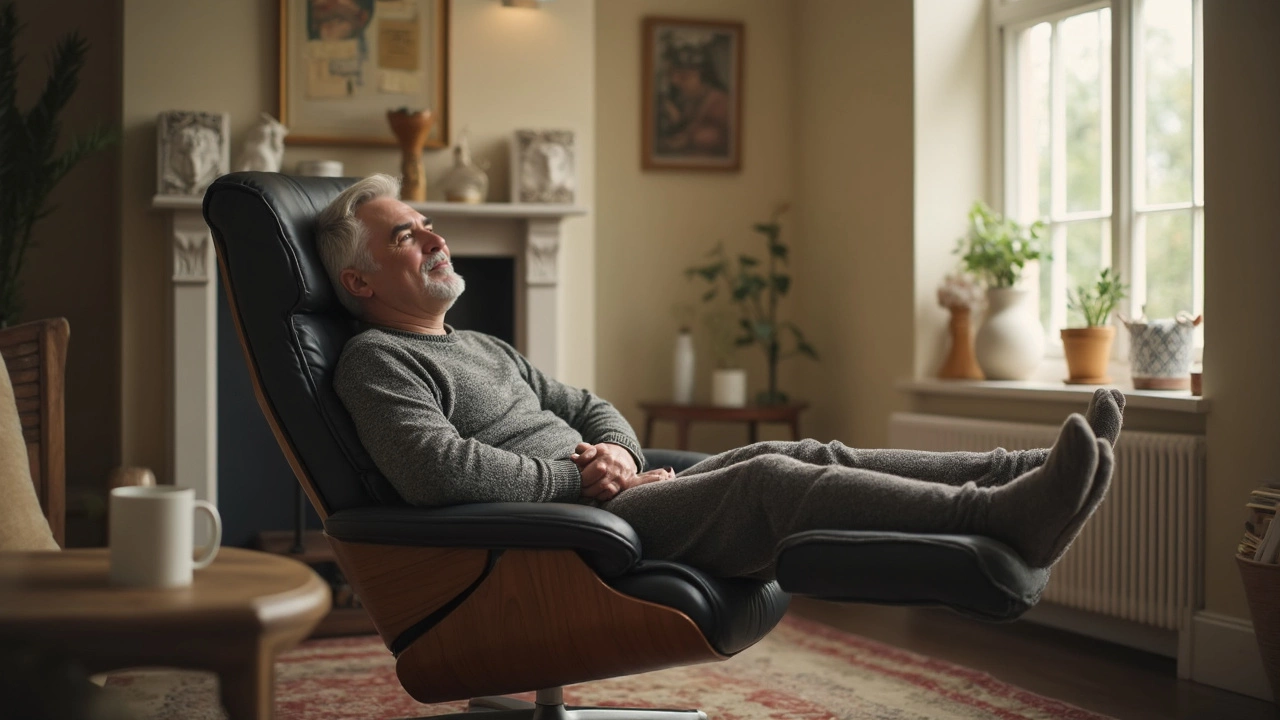Recliner Guide: Comfort, Health Benefits & Buying Tips
If you spend a lot of time relaxing at home, a good recliner can change the way you unwind. It’s more than a comfy chair – it can support your back, help with circulation, and even qualify for Medicare if it meets medical‑device rules. In this guide we’ll break down why a recliner might be right for you, what to look for when buying, and how to navigate insurance coverage.
Why a Recliner Might Be Right for You
First off, recliners are designed to move with your body. When you lean back, the seat tilts and the footrest lifts, taking pressure off your spine and hips. This shift can ease lower‑back pain and improve blood flow to your legs – a big plus for people who sit for long periods.
For seniors, the added support can mean more independence. Many models feature sturdy arms that are tall enough to help you stand up without jerking. Some even come with built‑in heat or massage functions that can soothe sore muscles after a day of activity.
One question that pops up a lot is whether a recliner can be covered by Medicare. The answer is yes, but only if the chair is classified as a "durable medical equipment" (DME) item. That means it must be prescribed by a doctor and meet specific safety standards. Brands like Lazyboy have DME‑approved lines, so checking the product label and asking your provider is essential.
Choosing the Right Recliner: Key Features
When you start shopping, focus on three main areas: comfort, durability, and cost. Test the seat cushion – it should feel firm enough to support you but soft enough to sink into. High‑density foam is a good sign of long‑lasting comfort.
Look at the frame material. Hardwood frames are strong and tend to last decades, while metal frames can be lighter but may not hold up as well under daily use. If you have pets, a leather or faux‑leather cover is easier to wipe clean than fabric.
Size matters too. Measure the space where you’ll place the recliner and compare it to the chair’s dimensions when fully extended. You don’t want a recliner that blocks a doorway or makes the room feel cramped.
If you’re eyeing Medicare coverage, keep the paperwork handy. You’ll need a doctor’s prescription, the chair’s DME certification, and a receipt showing the purchase price. Some retailers will handle the paperwork for you, but it’s worth confirming before you buy.
Lastly, set a budget. Recliners range from a few hundred pounds to over a thousand. A higher price often means better materials and longer warranty, but you can still find solid options on sale if you compare features carefully.
Putting it all together, a recliner can be a smart addition for comfort, health, and even financial assistance through Medicare. Take the time to try a few models, check the DME status if you need coverage, and pick a chair that fits both your space and your lifestyle. Happy relaxing!
Healthiest Way to Sit in a Recliner: Real Tips for Everyday Comfort
This article gets right to the point on how to actually sit in a recliner the healthy way. You'll find out what your back and legs need, which mistakes most people make, and how to get the most comfort without wrecking your posture. With evidence-based advice and no nonsense, you'll learn little tricks that can keep you pain-free. Whether you binge Netflix or nap, the tips here will make your recliner time healthier. Get ready to enjoy your favorite chair without regret.
MoreWhich Recliner Lasts the Longest? A Practical Guide
When investing in a recliner, you want one that stands the test of time. This guide dives into the materials, build quality, and brands known for durability. Learn tips on maintenance and what to look for when purchasing to ensure your recliner lasts. Discover the difference between manual and power recliners and their impacts on longevity. Get insights into user experiences and warranties that ensure peace of mind.
More

